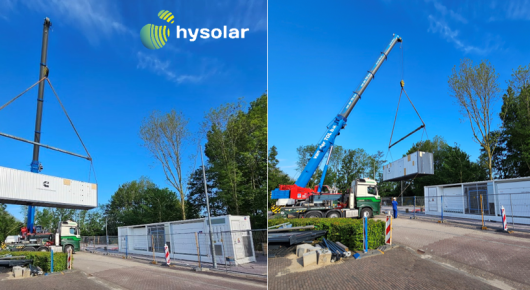The Hydrogen Bridge, green hydrogen through the digestion of biomass
22 November 2021One attractive route for the production of green hydrogen involves the digestion of organic waste streams. Until now, this route has attracted little attention even if it actually offers significant potential for the energy transition. De Waterstofbrug (‘The Hydrogen Bridge’) is a new initiative aimed at quickly changing this.
Digestion of biomass
By organic waste streams, we are referring to fruit/vegetable waste, roadside grass cuttings, manure and sludge from wastewater treatment. In specialised digester plants, which operate under oxygen-free conditions, biogas is produced, which is a mixture of mainly methane gas and CO2. This biogas is for the most part burned in a combined heat and power (CHP) installation for the production of heat and electricity. The CO2 is then generally released through the smokestack. In De Waterstofbrug both components – methane and CO2 – find a useful application.
Biogas as basis
Biomethane is produced by separating the methane from biogas. At some digester plants nitrogen is also added to this biomethane to upgrade it to the quality level of natural gas, thus creating ‘green gas’. Green hydrogen is produced from biomethane by means of steam methane reforming (SMR). The SMR process is also generally used to make grey hydrogen from natural gas. But by starting out with biomethane, we now produce green hydrogen. In this process it is also possible to recover the CO2 and make it suitable for useful applications, in the horticultural sector for example. The De Waterstofbrug concept has been further elaborated with a focus on the water sector – see De Waterstofbrug. On the basis of the total production and storage costs of hydrogen, the concept is attractive.
Complementary role
Finding sufficient sources of sustainable energy remains a huge challenge for the Netherlands. We need to grasp every opportunity that presents itself, and biogas production is certainly one of them. The biogas route thus offers a welcome complement to the most common route for the production of green hydrogen, namely, electrolysis: the splitting of water into hydrogen and oxygen, using green electricity. The advantage of the biogas route is that it is usually available on a continuous basis, which results in great savings on hydrogen storage costs. And let us not forget: it is the opportunity for the useful application of CO2.
Interested?
Please contact Ron Bol, green hydrogen expert: ron.bol@hysolar.nl

Fruit/vegetable waste and sludge from a wastewater treatmentplant as a source for green hydrogen production. Sources: AGV & Prezero

